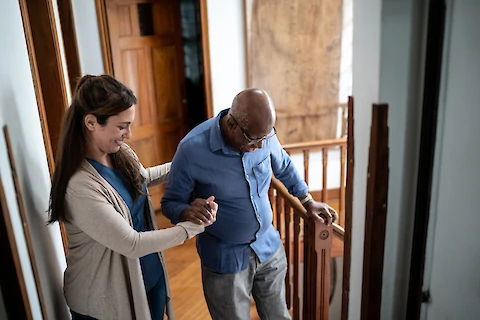
As we age, maintaining safety becomes increasingly necessary for leading a fulfilling, independent lifestyle. One major concern for many seniors living independently is the risk of falls. In fact, they can have significant health implications and compromise their ability to live alone. For this reason, it's important to delve into the top fall risks that seniors face - examining both environmental conditions and health-related issues that could increase the likelihood of a mishap. More importantly, you'll need practical and effective strategies to mitigate these fall risks, ensuring that seniors can continue to enjoy the comforts of home safely and securely.
Understand Fall Risks
Falls for seniors can lead to serious injuries, such as fractures and head traumas. Many of these result in hospitalizations. Moreover, falls can instill a fear of walking, leading to less physical activity. This only furthers physical decline and loss of independence, making matters worse.
Learn How to Mitigate Common Environmental Fall Risks in Seniors
Many fall risks in seniors are due to adverse environmental conditions. Here are some strategies to mitigate them:
Improve Lighting
Poor lighting can make it difficult to see obstacles. Address this by ensuring all areas of the home are well-lit. This is especially vital for places like stairs and narrow passages that may be difficult as it is to navigate.
Clear Clutter
Cluttered living spaces are another threat. Accumulated items can turn into tripping hazards. Regularly tidying living spaces can keep pathways clear and prevent falls. You can also consider enlisting help from a professional caregiver to maintain a clutter-free environment if necessary.
Remove Rugs and Spills
Lastly, slippery or uneven surfaces, such as loose rugs or wet floors, can easily lead to a fall. It's advised to secure loose rugs with double-sided tape or omit them altogether. Plus, you'll want to mop up any spills promptly to prevent accidents.
Manage Health Conditions That Increase the Likelihood of Falling
Certain health conditions also contribute to fall risks for seniors. Learning to manage them well can prove helpful.
Get Regular Eye Check-Ups
Poor vision can make it difficult for seniors to navigate safely. Regular eye check-ups are a must to ensure your vision is optimal.
Exercise
Muscle weakness or balance issues can also increase the chance of falling. Regular physical activity, especially exercises promoting strength and balance, can be beneficial.
Be Aware of Medication Side Effects
Certain medications can cause drowsiness or dizziness. You should review seniors' prescriptions and over-the-counter medications with their healthcare providers regularly. Ensure you are also aware of potential side effects and seek advice on how to combat them.
Reduce the Impact of Falling
Regular health check-ups are vital to identify and address potential health issues that could increase fall risks in seniors. Adding regular age-appropriate exercise to daily routines can improve strength and flexibility, making falls less likely. A healthy diet rich in calcium and vitamin D is also essential for maintaining strong bones, reducing the severity of injury in case of a fall.
Connect With Senior Helpers Danbury
Navigating through the years doesn't have to be risky. By recognizing and managing the common fall risks for seniors, we can create safer, more comfortable living spaces.
If you or your loved one resides in Danbury, New Milford, Newtown, Fairfield County, or Litchfield County and needs support in creating a fall-proof environment, contact us at Senior Helpers Danbury. We're committed to ensuring the safety of seniors in their homes, allowing them to maintain their independence and quality of life. Reach out today to learn more about our in-home care services.